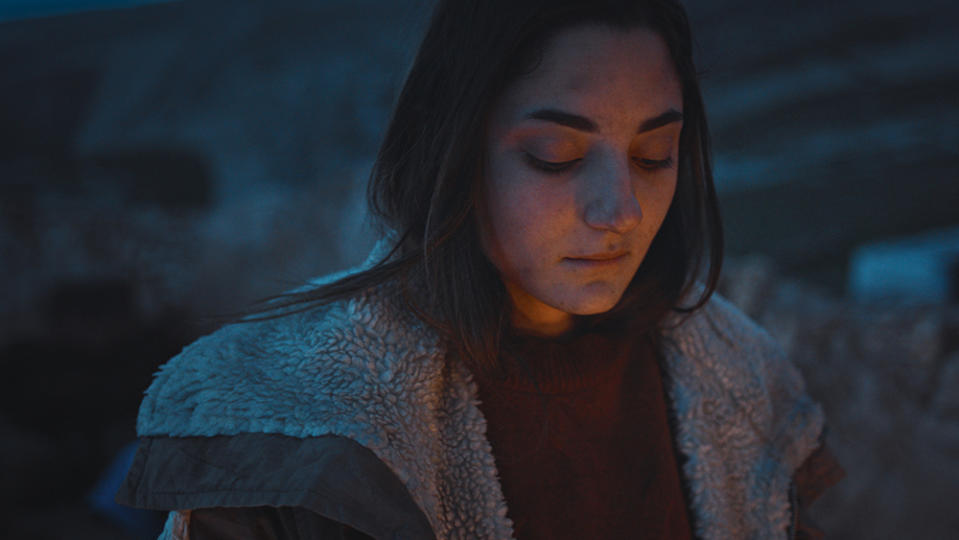Narrative Feature ‘Sinjar’ Portrays ISIS From a Female Standpoint

Claimed by both Iraq and Kurdistan, the town of Sinjar in northern Iraq was the site of an ISIL massacre of the Yazidi people in 2014 that lead to a devastating situation which human rights organizations call genocide. The town gives its name to the latest film from Spanish director Anna M. Bofarull who also wrote the narrative feature.
Bofarull co-produced with Spain’s KaBoGa and U.S. company Genius at Large. Barcelona-based Filmax took international rights earlier this year, and is releasing the film in Spain. The film follows several real life stories and takes us inside the conflict from these women’s experience of rape, sexual slavery and abuse.
More from Variety
'Viejos' Directors Discuss Filmax-Distributed Fantasia Contender
'Lost and Found,' with 'Money Heist' Star Alvaro Morte, Scores First Sales (EXCLUSIVE)
The film was shot partly in northern Iraq. Top-liners include Nora Navas, Halima Ilter and Eman Eido, a Yazidi woman who was held hostage by ISIS for several years. Variety spoke with Anna Bofarull about the film.
Eman Eido is a young Yazidi woman who was captured and held hostage by ISIS for four years. How did she survive this? How did this real life experience inform the film?
Eman was captured when she was 9-years-old and was immediately sold to an ISIS supporter and married to him. Her life completely changed after that. She was separated from her family, her childhood abruptly finished and she became an abused wife. She was later sold again and re-married, considered not more than an object. She managed to escape when she was 13-years-old, being a strong teenager ready to fight for a new life. The shooting of Sinjar took place as she was 15-years-old, and was living in a refugee camp. All of her past experiences were in her gaze, in her movements, and I wanted to add that to Arjin’s character, as this was unique. But, at the same time, it was a challenge to work with her, as she had no acting skills and we were working with real feelings and experiences.
You decided to show some of the horrors of ISIS and their wars through the perspectives of various women. What do you think their points of view and experience shows us about this situation, and how is this different to other films on the subject?
I wanted to explore how daily life can change with horrors that you cannot control. I wanted to bring Yazidi women’s life close to the screen and show to Western audiences that women living in the Middle East suffer as much as any others and are never prepared for that. And that, at the same time, foreign wars can also break into the reality of European women (as Carlota, the woman living in Barcelona and played by Nora Navas, experiences in the film). I wanted to explore how women in these situations need to adapt, how they need to survive. It is not just one day or one week of horror, but long months and even years for some of them, and I was surprised how Yazidi sex slaves under ISIS were able to survive one day after another, lots of them even with their children. That routine is something that I could not find in other films portraying life under ISIS.
Why did you decide to make this film? How did you come to this story, and how did you connect with these women?
After the ISIS invasion of the Sinjar area, I started to discover a lot of details about Yazidi women’s lives under ISIS, and how they were turned into sex slaves. I was really shocked. I could not realize how at that moment, in another place in the world, this could happen. And I travelled to Iraqi Kurdistan. I interviewed many women and children in refugee camps who had managed to escape ISIS territory and their experience deeply moved me. I committed to tell their experience, how women tried to survive to protect their children, how young girls had lost everything and just decided to fight ISIS until the end. And I also discovered how Western mothers had lost their kids to ISIS, as they escaped to join the Caliphate.

Courtesy of Filmax
Do you feel under threat from addressing this subject by ISIS? Are these women under threat?
I am not feeling under threat right now, as ISIS lost their power and territory before we started filming. But it is true that this project scared some producers at the beginning and they refused to get involved, fearing some consequences. Most Yazidi women are not under threat right now, although lots of them are living in refugee camps as their homes were destroyed and the Sinjar area is still insecure and the target of bombings by the Turkish army. Some Yazidi women and children are still missing, probably living with former ISIS supporters.
For how long did you shoot? When and where? And what were the challenges?
We were shooting for six weeks in Iraqi Kurdistan, close to the Sinjar area, in real locations and with a lot of real actors. We got the support of the local Yazidi community and the Kurdish army, who were committed to the film and helped a lot. And suddenly the Covid pandemic started, with a Spanish-German women-only crew blocked in Iraq. After finishing the shoot all the crew were locked down inside a house, the house where one of the characters remains enslaved. The Spanish army managed to bring us back home. We managed to finish the filming in Barcelona in November, with many Covid precautions in place.
Best of Variety
25 Groundbreaking Female Directors: From Alice Guy to Chloé Zhao
'Game of Thrones' Filming Locations in Northern Ireland to Open as Tourist Attractions
Sign up for Variety’s Newsletter. For the latest news, follow us on Facebook, Twitter, and Instagram.


